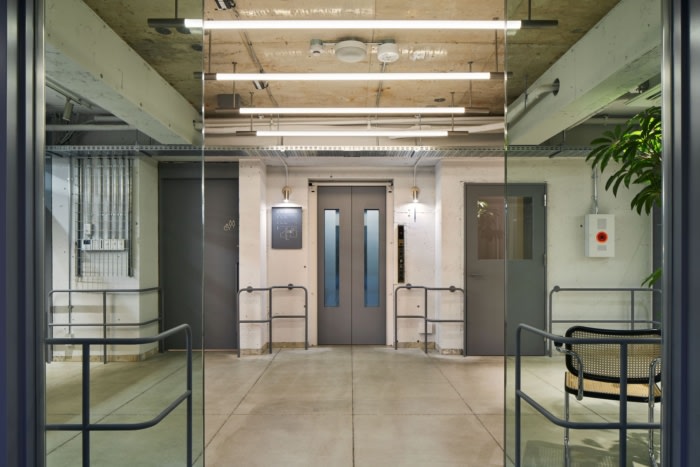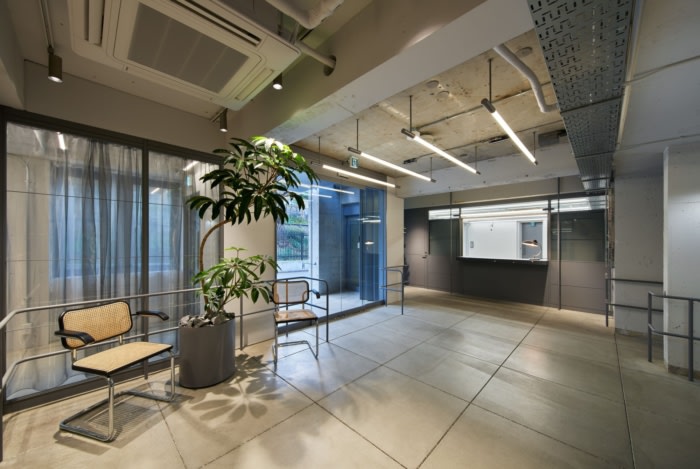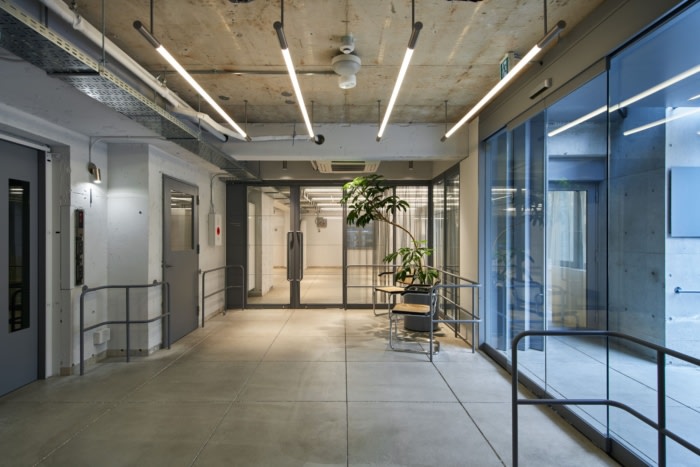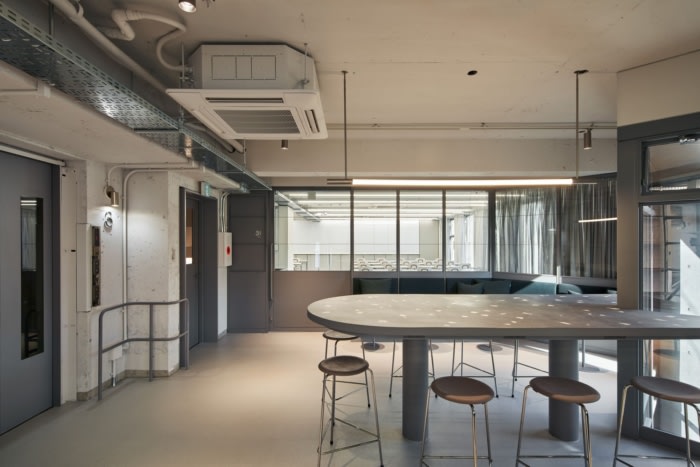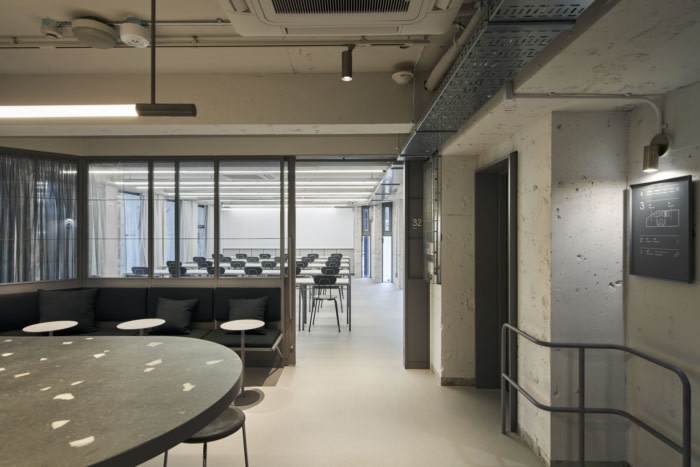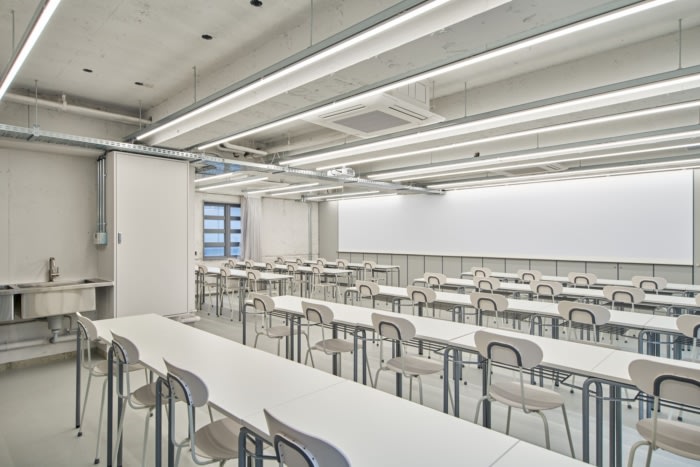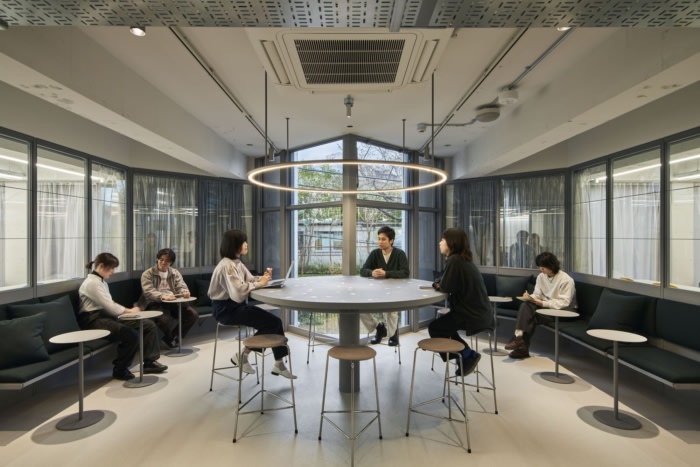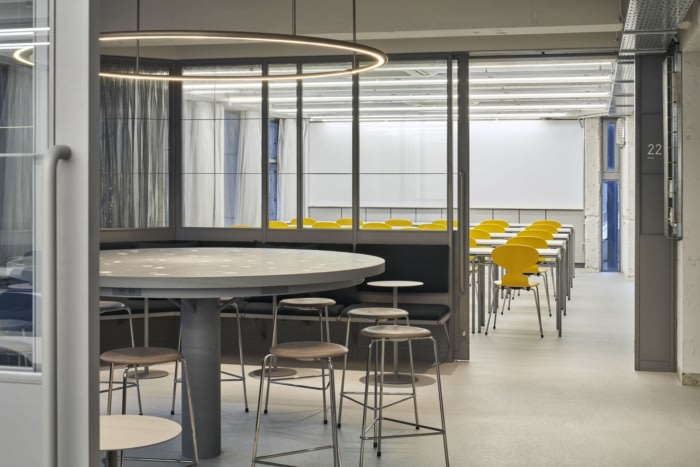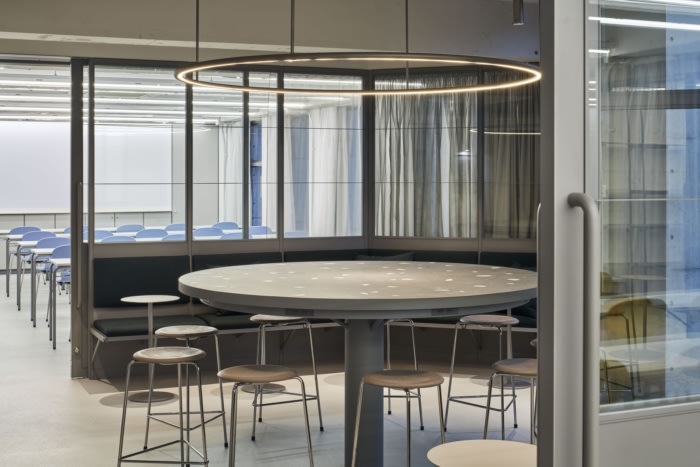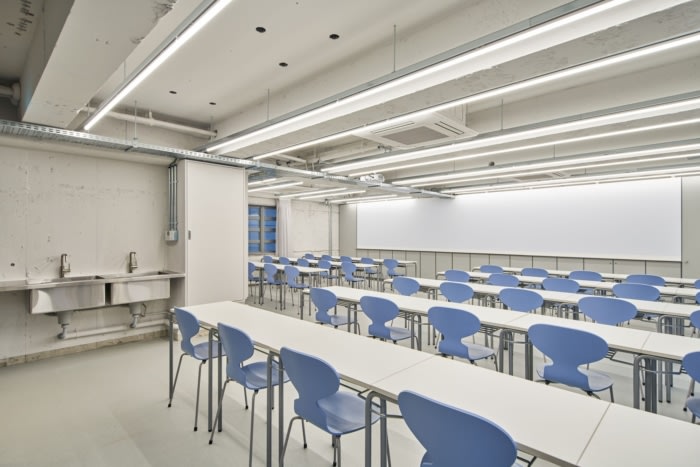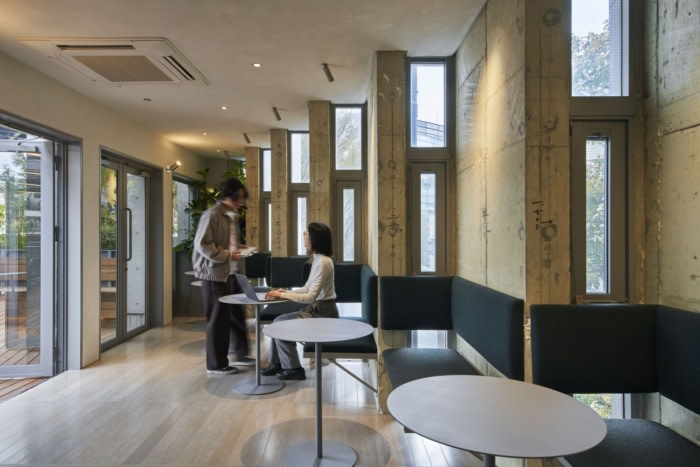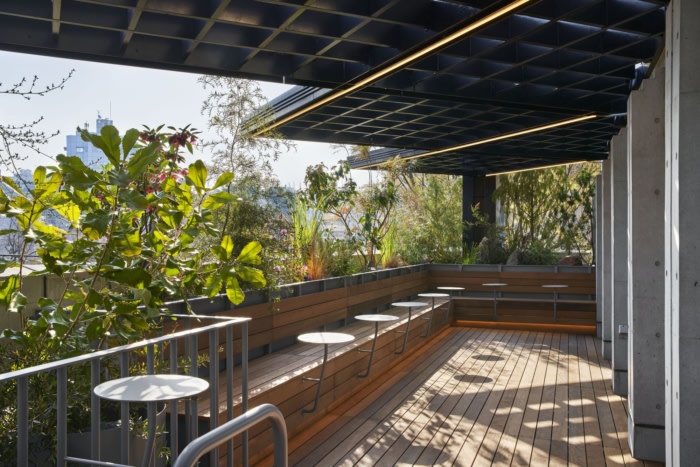Kuwasawa Design School
moss. completed a space that reflects the values of Kuwasawa Design School in Tokyo, Japan.
The first phase of construction of the new Kuwasawa Design School building, the first design school in Japan. The project began with the complete renovation of a building located not far from the current school building, with the aim of enhancing its functions by operating it in tandem with the current school building.
The first phase of the project covered the first to fourth floors above ground. The long, symmetrical shape of the building was utilized in the layout plan, and the aim was to create an open facility by renewing the facilities for universal use and planning efficient flow lines. The first through third floors are planned to have a common space in the center, with event spaces, classrooms, and other functional spaces on both sides of the common space.
The event space was designed to be a public and flexible space that connects the school with the outside world, and in consideration of visibility from the facade, it is bright and open, and can be approached directly from the side of the entrance.
The common space between the classrooms on the 2nd and 3rd floors is equipped with benches and high tables, which can be used for different purposes and serve as a space for students to connect with each other, making the time between classes more meaningful.
More than half of the fourth floor is outdoors, with a view of the Yoyogi stadium and the lush greenery of Yoyogi Park, and a decked terrace with built-in benches, large tables, and counters. The building, built in the 1990s, is a post office building.
Built in the 1990s, the building has a distinctive concrete exterior that evokes a postmodern atmosphere, while the interior retains the old-fashioned interior of the time, with marble-clad walls and wooden floors. In order to contrast with the exterior, the interior was designed to be permanently neutral with an eye on the next few decades, with minimal decoration, and to add an urban edge to the building, which is located halfway between Shibuya and Harajuku.
We were also conscious of the distribution of the budget, and as a whole, the space was designed to maximize the functionality of each room through minimal finishes and innovations, with many parts of the original structure exposed so that they can be updated as they are used.
Given the fact that the school was founded based on the design philosophy of the *Bauhaus in Germany, the interior materials are mainly steel, glass, and concrete, which pushed forward the progress of modernism, and the railings and sashes are modern updates of details used in Dessau. The new and old through renovation, and the contrast between the Bauhaus of the time and Kuwasawa as a modern design school, are intended to create a contrast.
The simple curled railings, custom-made curtains, fabrics, and upcycled marble tops soften the strength of the straight lines that emerge as the mechanisms and functions form the space in their bare form, and give the space a human warmth that will be felt by the students as they use it daily. The space was also intended to evoke inspiration through direct contact with the hands and eyes of the students as they use it on a daily basis.
The neutral gray (industrial gray without assertiveness) used in the white box painted on the skeleton is somewhat urban, but at the same time it is moderate, and is meant to accentuate the individual “colors” of the students as they pursue their designs.The above elements will continue to create a universal impression that will serve as a balance for students studying in the city, allowing them to focus on their own studies, we hope that it will continue to function as a generous receptacle that carries on the history of the first design school in Japan.
Design: moss.
Contractor: Studio inc.
Photography: Koji Fujii | TOREAL



